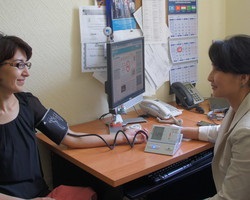In a significant development in the management of high blood pressure, new research from the American Heart Association (AHA) emphasizes the need for doctors to evaluate both short-term (10-year) and long-term (30-year) cardiovascular disease (CVD) risks before initiating medication therapy for stage 1 hypertension. The study, published in the AHA’s journal Hypertension on Monday, highlights how current risk assessment practices might overlook patients who could benefit from early intervention.
The research team, led by experts from the University of Alabama, compared two tools for calculating CVD risks: the newly developed PREVENT risk calculator and the older Pooled Cohort Equations (PCE). The findings indicate that the application of only the 10-year risk thresholds may result in fewer adults being recommended for blood pressure-lowering medication, potentially leaving long-term risks unaddressed.
PREVENT, released by the AHA in 2023, offers a more comprehensive risk assessment by incorporating sex-specific equations, markers of kidney disease, HbA1c measures for metabolic health, and the social deprivation index. It is capable of estimating both 10-year and 30-year risks for heart attack, stroke, and heart failure. In contrast, the PCE does not calculate 30-year risks and excludes factors such as kidney function and statin use.
“Many people with stage 1 high blood pressure who are not likely to have a heart attack, stroke, or heart failure within the next 10 years may have a high risk over the next 30 years,” said lead author Paul Muntner, a visiting professor in the Department of Epidemiology at the University of Alabama. He emphasized the importance of identifying these individuals early to start anti-hypertensive medication and prevent potential heart attacks or strokes later in life.
The study underscores the evolving understanding of hypertension management and the necessity for more nuanced risk assessment tools. By considering long-term risks, healthcare providers can make more informed decisions that could significantly improve patient outcomes over time.












